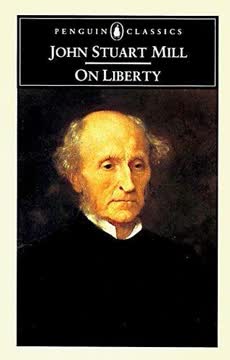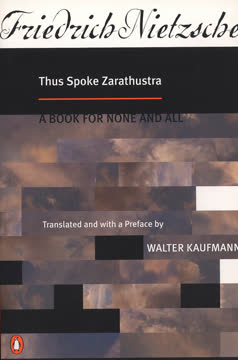نکات کلیدی
1. مبارزهی طبقاتی، عامل اصلی تغییرات تاریخی
"تاریخ تمام جوامع موجود تا کنون، تاریخ مبارزات طبقاتی است."
دینامیکهای بنیادی تاریخی. مارکس استدلال میکند که تاریخ بشر یک پیشرفت خطی از ایدهها یا پیشرفتهای تکنولوژیکی نیست، بلکه یک درگیری مداوم بین طبقات ستمگر و ستمکشیده است. هر دوره تاریخی با تضادهای اقتصادی و اجتماعی بنیادی مشخص میشود که تغییرات اجتماعی را به حرکت درمیآورد.
مراحل درگیری طبقاتی. در طول تاریخ، پیکربندیهای مختلف طبقاتی ظهور کرده و برای برتری با یکدیگر مبارزه کردهاند:
- روم باستان: پاتریسیها در برابر پلبیها
- قرون وسطی: لردهای فئودال در برابر دهقانان
- عصر سرمایهداری: بورژوازی در برابر پرولتاریا
فرایند دیالکتیکی. هر مبارزهی طبقاتی یا به بازسازی انقلابی جامعه منجر میشود یا به ویرانی متقابل، که الگوی چرخهای از تحول اجتماعی را ایجاد میکند. درگیری بین طبقات تنها سیاسی نیست، بلکه بهطور بنیادی اقتصادی است و ریشه در کنترل تولید و منابع دارد.
2. بورژوازی سیستمهای اقتصادی و اجتماعی را دگرگون میکند
"بورژوازی نمیتواند بدون دگرگون کردن مداوم ابزارهای تولید و به تبع آن روابط تولید و با آنها کل روابط اجتماعی، وجود داشته باشد."
دینامیک تحولآفرین سرمایهداری. بورژوازی بهطور بنیادی ساختارهای اجتماعی موجود را از طریق نوآوریهای مداوم تکنولوژیکی و اقتصادی مختل میکند. برخلاف طبقات حاکم قبلی، آنها یک سیستم اقتصادی ذاتاً پویا ایجاد میکنند که بهطور مداوم روشهای تولید و روابط اجتماعی را دگرگون میسازد.
ادغام اقتصادی جهانی. گسترش سرمایهداری منجر به:
- ایجاد بازارهای جهانی
- ویرانی ساختارهای اقتصادی سنتی
- استانداردسازی تولید
- وابستگی اقتصادی جهانی
پیامدهای فلسفی. این انقلاب مداوم، پیوندهای اجتماعی سنتی، باورهای مذهبی و شیوههای فرهنگی را تضعیف کرده و آنها را با روابط اقتصادی محاسبهشده و "خودخواهی عریان" جایگزین میکند.
3. سرمایهداری گورکنان خود را خلق میکند: پرولتاریا
"آنچه بورژوازی تولید میکند، در درجه اول، گورکنان خود است."
تناقض سیستماتیک. سرمایهداری بهطور ذاتی شرایط تخریب بالقوه خود را با ایجاد یک طبقه کارگر بزرگ، متمرکز و بهطور فزایندهای پیچیده تولید میکند. مکانیزمهای تولید سرمایهداری پرولتاریا را متحد و آموزش میدهد و آگاهی انقلابی بالقوه آنها را ممکن میسازد.
توسعه پرولتاریا. طبقه کارگر از چندین مرحله عبور میکند:
- مقاومت فردی اولیه
- اقدام جمعی محلی
- جنبشهای ملی سازمانیافته
- انقلاب بالقوه بینالمللی
پتانسیل انقلابی. با تمرکز کارگران و استانداردسازی تجربیات آنها، سرمایهداری بهطور ناخواسته زیرساخت اجتماعی و فکری لازم برای مقاومت جمعی و تحول سیستماتیک را ایجاد میکند.
4. مالکیت خصوصی ریشه استثمار اجتماعی است
"نظریه کمونیستها را میتوان در یک جمله خلاصه کرد: لغو مالکیت خصوصی."
انتقاد اقتصادی. مالکیت خصوصی تنها یک ساختار قانونی نیست، بلکه یک مکانیزم بنیادی از ستم اجتماعی است. این امکان را برای بورژوازی فراهم میکند که ارزش اضافی را از کار کارگران استخراج کند و نابرابری اقتصادی سیستماتیک ایجاد کند.
تبدیل مالکیت. کمونیسم پیشنهاد میکند:
- مالکیت جمعی وسایل تولید
- حذف روابط مالکیتی مبتنی بر طبقه
- توزیع مجدد منابع اقتصادی
- ایجاد یک سیستم اجتماعی عادلانهتر
بازاندیشی فلسفی. لغو مالکیت خصوصی بیشتر از یک تغییر اقتصادی است—این یک بازاندیشی رادیکال از روابط اجتماعی انسانی است که پایههای ساختاری استثمار را حذف میکند.
5. کمونیسم به دنبال آزادی طبقه کارگر است
"پرولتاریا چیزی برای از دست دادن جز زنجیرهایش ندارد. آنها جهانی برای به دست آوردن دارند."
آزادی انقلابی. کمونیسم تنها یک سیستم اقتصادی نیست، بلکه یک حرکت اجتماعی جامع است که هدف آن آزادسازی طبقه کارگر از ستم سیستماتیک است. این تلاش میکند نه تنها روابط اقتصادی بلکه آگاهی انسانی و سازمان اجتماعی را دگرگون کند.
استراتژیهای کلیدی آزادی:
- مالکیت جمعی
- حذف تمایزات طبقاتی
- دسترسی جهانی به آموزش
- بازسازی نهادهای اجتماعی
- همبستگی کارگران بینالمللی
چشمانداز انسانی. فراتر از سازماندهی اقتصادی، کمونیسم جامعهای را تصور میکند که در آن توسعه فردی برای همه، نه فقط برای اقلیتهای privileged، ممکن میشود.
آخرین بهروزرسانی::
FAQ
What's "The Communist Manifesto" about?
- Historical Context: "The Communist Manifesto" is a political pamphlet written by Karl Marx and Friedrich Engels, first published in 1848. It outlines the principles of communism and the theory of historical materialism.
- Class Struggle: The manifesto argues that all historical societies have been characterized by class struggles, and it predicts the inevitable victory of the proletariat (working class) over the bourgeoisie (capitalist class).
- Call to Action: It serves as a call to action for the working class to unite and overthrow the capitalist system, establishing a classless society.
Why should I read "The Communist Manifesto"?
- Foundational Text: It is a foundational text for understanding Marxist theory and the development of socialist and communist movements worldwide.
- Historical Impact: The manifesto has had a profound impact on political thought and has influenced numerous revolutions and political movements.
- Understanding Capitalism: It provides a critical analysis of capitalism and its effects on society, which remains relevant in discussions about economic systems today.
What are the key takeaways of "The Communist Manifesto"?
- Class Struggle: The history of society is the history of class struggles, with the current struggle being between the bourgeoisie and the proletariat.
- Inevitability of Revolution: The manifesto predicts that the contradictions within capitalism will lead to its downfall and the rise of communism.
- Communist Goals: Communists aim to abolish bourgeois property, establish a classless society, and ensure the free development of each individual.
What are the best quotes from "The Communist Manifesto" and what do they mean?
- "A spectre is haunting Europe — the spectre of Communism." This opening line highlights the growing influence and fear of communism across Europe.
- "The history of all hitherto existing society is the history of class struggles." This quote encapsulates the central thesis of the manifesto, emphasizing the role of class conflict in historical development.
- "The proletarians have nothing to lose but their chains. They have a world to win." This rallying cry encourages the working class to unite and fight for their liberation.
How does "The Communist Manifesto" define the bourgeoisie and proletariat?
- Bourgeoisie: The bourgeoisie is the capitalist class that owns the means of production and exploits the labor of the proletariat for profit.
- Proletariat: The proletariat is the working class that sells their labor to the bourgeoisie and is oppressed under the capitalist system.
- Class Conflict: The manifesto argues that the conflict between these two classes is the driving force of historical change.
What is the historical context of "The Communist Manifesto"?
- Industrial Revolution: The manifesto was written during the Industrial Revolution, a time of significant economic and social change, which saw the rise of industrial capitalism.
- Political Climate: It was published on the eve of the 1848 revolutions in Europe, a period of widespread social and political upheaval.
- Communist League: Marx and Engels wrote the manifesto for the Communist League, an international political party advocating for the rights of the working class.
What is the role of the Communist Party according to "The Communist Manifesto"?
- Vanguard of the Proletariat: The Communist Party is described as the most advanced and resolute section of the working-class parties, pushing forward the interests of the proletariat.
- International Solidarity: Communists aim to unite workers across national boundaries, emphasizing the common interests of the proletariat worldwide.
- Political Strategy: The party seeks to achieve political power for the proletariat and implement measures to transition to a classless society.
How does "The Communist Manifesto" view capitalism?
- Revolutionary Role: The manifesto acknowledges the revolutionary role of capitalism in transforming society and increasing productive forces.
- Exploitation and Alienation: It criticizes capitalism for exploiting workers and creating alienation, where workers are disconnected from the products of their labor.
- Inevitability of Collapse: The manifesto argues that capitalism contains inherent contradictions that will lead to its eventual collapse and replacement by communism.
What are the proposed measures for transitioning to communism in "The Communist Manifesto"?
- Abolition of Property: Abolishing private property and centralizing the means of production in the hands of the state.
- Progressive Taxation: Implementing a heavy progressive or graduated income tax to redistribute wealth.
- Free Education: Providing free education for all children and combining education with industrial production.
How does "The Communist Manifesto" address socialist and communist literature?
- Reactionary Socialism: Critiques forms of socialism that seek to preserve existing class structures, such as feudal socialism and petty-bourgeois socialism.
- Critical-Utopian Socialism: Discusses early socialist thinkers like Saint-Simon and Fourier, who envisioned ideal societies but lacked a practical basis for achieving them.
- Communist Distinction: Emphasizes that communists focus on the real conditions and struggles of the working class, rather than utopian ideals.
What is the significance of the prefaces in "The Communist Manifesto"?
- Historical Updates: The prefaces, written by Marx and Engels for various editions, provide updates on the political and social context since the original publication.
- Reflections on Impact: They reflect on the impact and spread of the manifesto's ideas across different countries and movements.
- Enduring Relevance: The prefaces highlight the enduring relevance of the manifesto's principles in light of ongoing class struggles and political developments.
How does "The Communist Manifesto" conclude?
- Call to Action: The manifesto concludes with a call for the proletarians of all countries to unite, emphasizing the global nature of the struggle.
- Revolutionary Confidence: It expresses confidence in the inevitability of a proletarian revolution and the establishment of a classless society.
- Challenge to the Bourgeoisie: The manifesto boldly challenges the ruling classes, asserting that the proletarians have nothing to lose but their chains.
نقد و بررسی
کتاب مانیفست کمونیستی نظرات متفاوتی را به خود جلب کرده است؛ برخی به اهمیت تاریخی و ایدههای تحریکآمیز آن اشاره میکنند، در حالی که دیگران به مفاهیم قدیمی و پتانسیل سوءاستفاده از آن انتقاد میکنند. بسیاری از خوانندگان تحلیل مارکس از نواقص سرمایهداری را مورد تحسین قرار میدهند، اما در مورد راهحلهای پیشنهادی او تردید دارند. بلاغت قوی و ارائه مختصر ایدههای پیچیده در این مانیفست بهطور گستردهای مورد تأیید قرار گرفته است. با وجود اختلاف نظرها، بیشتر منتقدان آن را کتابی ضروری برای درک تاریخ سیاسی و اقتصادی میدانند و تأثیر آن هنوز در گفتمانهای مدرن مشهود است.

























